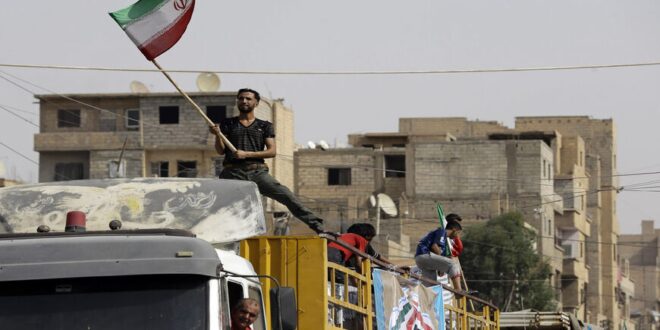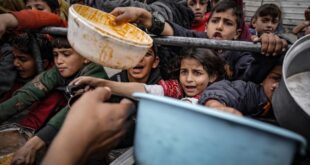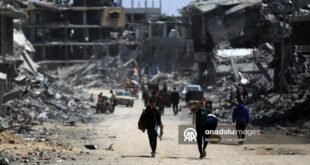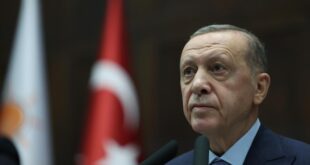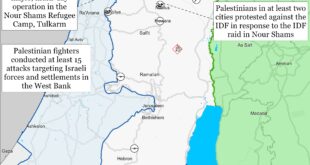Iran exports to Syria are increasing, a sign of an improving economic relation between the two countries.
Tehran seems to have managed to improve its economic relations with Syria and achieve a steady rise in Iranian exports there. It continues its efforts to tighten control over Deir ez-Zor governorate, known for its agricultural and oil wealth. Iran is thus working both the military and economic aspects to compensate for the material losses it ensured defending the Syrian regime.
Meanwhile, the Russians are trying to monopolize the bulk of investment in Syria, especially with regard to oil and gas and reconstruction, without taking into account the interests of the Iranians and the agreements signed with the Syrian side. Conflicting agreements and contracts in some sectors, mainly in the fields of oil and gas, between Iran and Russia may result in disputes in this regard.
Iran has used Syrian and Arab institutions and figures to cover its economic activity and investments in Deir ez-Zor, which are financed by international organizations defined as “humanitarian associations that help Syrians affected by the war.” Meanwhile, it signs contracts for restoring schools, roads and bridges, approved by Syrian regime officials in Deir ez-Zor.
Political analyst Hassan al-Nifi told Al-Monitor, “Iranian influence in Syria is no longer limited to military and political control. Iran has bigger ambitions and it has begun drawing up new strategies to dominate Syria’s economy, through investments in the tourism and trade sectors.”
He said, “Iran’s desire to dominate the oil-rich city of Deir ez-Zor stems from the fact that Washington controls it. Iran is trying to reap whatever it can in order to have economic as well as military dominance in Syria, especially since Russia has taken over the underground resources and energy.”
It seems that these humanitarian organizations have pumped large sums into the restoration operations, exceeding what was allocated. Large reconstruction operations were carried out in al-Bukamal and its countryside where dozens of schools were renovated, as well as in the villages of al-Suway’iya and al-Hari on the Syrian-Iraqi border, which are extremely important to Iran due to their proximity to al-Qaim border crossing and the crossing controlled by the pro-Iranian Iraqi Popular Mobilization Units. Not to mention that the families of Iranian militia members have settled in these two villages, in addition to al-Bukamal.
Anas Shawakh, researcher at Jusoor for Studies, told Al-Monitor, “Iran has relied on humanitarian organizations in Deir ez-Zor since the regime regained control of parts of it in 2017, as a source of funding for its military presence in the area. These organizations include Imam al-Kadhum for Development, Imam al-Mukhtar Foundation and Al Fourat for Peace. Iran benefits from this funding in several ways, including directing the financial support allocated to these organizations to serve its project of spreading Shiism in the area through the distribution of aid or the establishment of small and medium service projects in certain areas.”
He noted, “Iran is doing this to gain the loyalty of the population in these areas or benefit from this support in financing its militia members and providing food and medical aid to them and their families. In addition, several Iranian charities provide medical services and aid to members of the regime forces, the National Defense Forces and the Baath Brigades. All these local institutions and associations are run through the Iranian Cultural Chancellery in Damascus.”
The official page of Deir ez-Zor governorate has published information about the funds the Iranian organizations operating in Syria receive from the United Nations, noting that over 2 billion Syrian pounds have been provided for three projects in the area.
Shawakh added that the large sums of money that these organizations obtain from the fake construction contracts are used to cover their military expenditures and pay the salaries of their members. The size of Iran’s military expenditures in Syria is not known.
Meanwhile, Fadel Abdul Ghany, director of the Syrian Network for Human Rights, told Al-Monitor, “Iran is not only seeking to compensate for its losses but is also seeking to stay long term in Syria. It focuses on Deir ez-Zor because it is close to the Iraqi border, which makes it easier to supply support. Iran has established dozens of charitable and nonprofit organizations in several parts of Syria, as part of a wide campaign to build influence, and monopolize the provision of services and humanitarian aid in areas that are of strategic importance to Tehran. No one will be able to separate the Iranian regime from the Syrian regime, as both have built strong networks within the state and society.”
He said, “Iran’s establishment of at least 38 organizations operating in Aleppo, Homs, Damascus, Daraa, Deir ez-Zor, Latakia, Hama and Quneitra is an attempt to pave the way for a long-term Iranian presence in Syria and a step to compel international institutions and the UN to work with it and finance it so it can steal the aid allocated for the Syrian people. This is one of the reasons why everyone refuses to supply humanitarian aid through northwestern Syria because it will be seized there.”
Because these organizations define themselves as humanitarian, they specialize in all areas of service, awareness, development and response, such as food and financial relief.
 Eurasia Press & News
Eurasia Press & News
